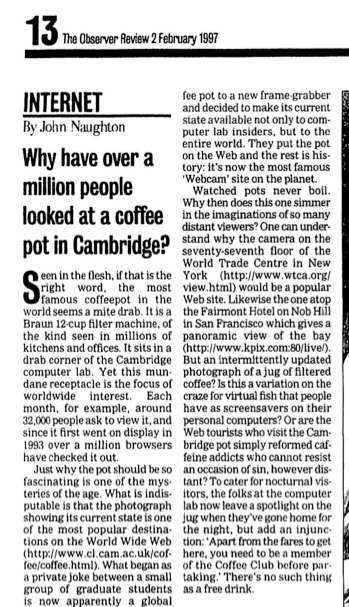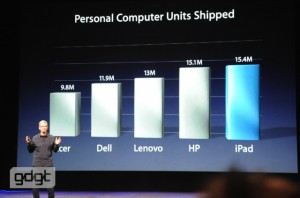Quentin has been clearing out his files and he came on this — a little essay I wrote for the Observer about his role in the invention of the webcam. It was one of the most rewarding pieces I’ve ever written because it was what caused me to meet him, thereby launching a great friendship, an unending series of gadget wars (in which each tries to bankrupt the other by buying gizmos) and a fascinating sequence of not-for-profit joint enterprises (not all of which were intentionally charitable!) Sometimes journalism is its own reward.
PDF of the article here.








